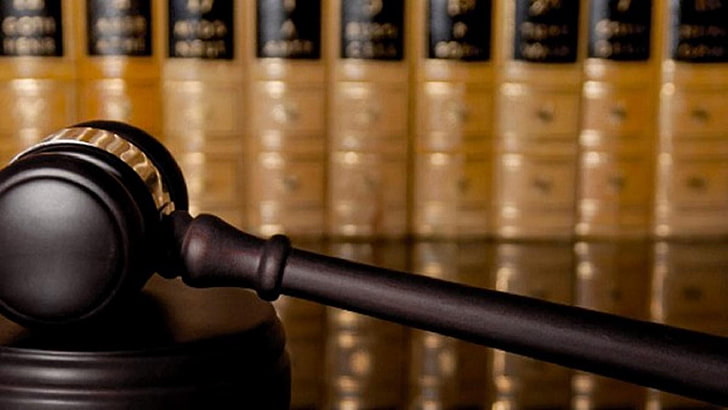Debt Relief: Options for Financial Crisis and Bankruptcy

The crushing burden of overwhelming, unmanageable debt is a severe financial reality that thousands of individuals and families worldwide face every single year. This distress is often the result of sudden, catastrophic life events. These events include unexpected job loss, severe medical emergencies, or profound business failures that completely wipe out financial reserves.
When the total debt obligation—comprising high-interest credit cards, unsecured personal loans, and crippling medical bills—vastly exceeds the borrower’s realistic capacity to repay, the situation requires more than simple debt consolidation. It demands a formal, structured, and legally binding intervention.
Bankruptcy and Debt Relief Optionsrepresents the indispensable, specialized legal and financial discipline dedicated entirely to providing a sanctioned pathway for honest but unfortunate debtors to achieve a necessary “fresh start.” This crucial process is far more than a simple legal filing. It is a high-stakes maneuver that fundamentally restructures, reduces, or completely eliminates overwhelming debt obligations.
Understanding the core legal distinctions between the different bankruptcy chapters, the stringent qualification criteria, and the profound, long-term impact on one’s financial future is absolutely non-negotiable. This knowledge is the key to minimizing financial stress, halting aggressive creditor action, and securing the eventual return to economic stability and creditworthiness.
The Strategic Necessity of Legal Intervention

The core necessity for exploring bankruptcy and formal debt relief stems directly from the unsustainability of unmanageable debt. When a borrower is trapped in a spiral of minimum payments, high interest, and accumulating fees, they cannot build savings, invest in their future, or cover basic living expenses. Legal intervention is required to break this financially destructive cycle. The primary goal of bankruptcy law is to provide a societal safety valve. This allows financially overwhelmed individuals to resolve their debt in an orderly, final manner. This resolution ensures that the borrower can eventually return to productive economic life.
Bankruptcy is a federal legal process. It provides two main benefits to the individual debtor. It immediately grants an automatic stay. This legally halts nearly all debt collection efforts, including foreclosure, wage garnishment, and continuous creditor phone calls. This immediate legal protection provides mandatory, crucial breathing room. It allows the debtor to regain control and stability.
The legal structure of bankruptcy provides two primary solutions. It offers the legal mechanism for liquidation (Chapter 7), which sells non-exempt assets to pay creditors. It also offers reorganization (Chapter 13), which restructures payments over a fixed period. The appropriate solution depends on the debtor’s income, asset ownership, and specific debt profile.
While bankruptcy inflicts severe, long-lasting damage to the borrower’s credit score, it is often the most financially sound decision. It provides a non-negotiable, final, legal reset that allows the individual to stop incurring interest and begin rebuilding their financial foundation immediately. The alternative is often years of crippling financial stagnation.
Chapter 7 Bankruptcy (Liquidation)
![]()
Chapter 7 Bankruptcy, often referred to as “liquidation bankruptcy,” is the most common and fastest form of relief for individuals and married couples facing overwhelming unsecured debt. It is designed for debtors with limited income and minimal non-exempt assets. This process provides a rapid, final discharge of most consumer debts.
A. Means Test Qualification
Qualification for Chapter 7 is strictly governed by the Means Test. The Means Test objectively assesses the debtor’s monthly income. If the debtor’s income is below the median income for their state and household size, they automatically qualify. If their income is above the median, a more complex calculation determines if they have sufficient disposable income to repay a portion of their debts. Failure of the Means Test mandates exploring Chapter 13.
B. Discharge of Unsecured Debt
Chapter 7 provides a swift discharge (legal elimination) of most unsecured debt. This includes medical bills, credit card balances, personal loans, and certain business debts. Crucially, Chapter 7 does not discharge certain non-negotiable debts. Non-dischargeable debts include most student loans, recent tax debts, child support obligations, and debts resulting from intentional fraud.
C. Asset Liquidation and Exemptions
The process requires the debtor to surrender all non-exempt assets to a court-appointed bankruptcy trustee. The trustee sells these assets. The proceeds are distributed to creditors. However, strict state and federal exemption laws protect necessary assets. Exemptions typically include a portion of the equity in the primary residence (homestead), necessary household goods, tools of the trade, and retirement accounts. The vast majority of Chapter 7 filers surrender no assets whatsoever.
D. Speed and Finality
Chapter 7 is defined by its speed and finality. The entire process, from filing to the final debt discharge, typically lasts only three to six months. This rapid resolution provides an immediate, clean, and non-negotiable end to debt collection. The quick, final reset allows the debtor to begin repairing their credit health and rebuilding their savings immediately.
Chapter 13 Bankruptcy (Reorganization)
![]()
Chapter 13 Bankruptcy, often called “reorganization bankruptcy” or the “wage earner’s plan,” is designed for debtors who possess steady income but cannot meet their current debt obligations. This structure allows the debtor to retain all of their assets while proposing a court-approved repayment plan. Chapter 13 enforces discipline.
E. Retaining All Assets
The primary advantage of Chapter 13 is the ability to retain all assets, including all non-exempt property and the primary residence. The debtor is not required to surrender assets for liquidation. This is the mandatory choice for homeowners facing imminent foreclosure. Chapter 13 provides a legal path to save the home.
F. Court-Approved Repayment Plan
The debtor proposes a comprehensive, court-approved Repayment Plan. This plan typically lasts three to five years. The debtor makes a single, fixed monthly payment to the trustee. The trustee then disburses the funds to the various creditors. The plan can reduce the total amount paid on unsecured debt. It restructures secured debt (mortgage arrears, car loans) into manageable payments.
G. Protection of Secured Debt
Chapter 13 is frequently used for the protection of secured debt. The automatic stay immediately halts foreclosure. The repayment plan allows the debtor to cure mortgage arrears (past due payments) over the five-year plan period. This structural restructuring provides a necessary path to catch up on the mortgage. It saves the family home.
H. Plan Duration and Complexity
The primary drawback of Chapter 13 is its long duration and high complexity. The debtor remains under court supervision for three to five years. The monthly payment is often calculated based on the debtor’s total disposable income. The process requires continuous adherence to the budget. This long-term commitment demands significant discipline.
Alternatives to Bankruptcy
Formal bankruptcy should always be considered the option of last resort due to its severe, long-lasting impact on the borrower’s credit reputation. Several less-damaging alternatives can be explored for debt relief, provided the borrower’s financial situation is not yet totally catastrophic. Exploration of alternatives is mandatory.
I. Debt Consolidation
Debt Consolidation involves securing a single, lower-interest loan (e.g., a personal loan or HELOC) to pay off multiple high-APR unsecured debts (e.g., credit cards). This maneuver simplifies payments. It reduces the overall interest rate burden significantly. Consolidation is only successful if the borrower immediately ceases using the high-interest credit accounts.
J. Debt Management Plans (DMPs)
Debt Management Plans (DMPs) involve working with a non-profit credit counseling agency. The agency negotiates with creditors to reduce interest rates and waive late fees. The debtor makes a single monthly payment to the agency. This agency then disburses funds to creditors. DMPs are not loans. They simplify repayment but require closing all credit cards.
K. Debt Settlement
Debt Settlement is a highly aggressive and risky strategy. A third-party company negotiates with creditors to settle the debt for less than the total amount owed. This strategy severely damages the borrower’s credit score. Crucially, the amount of debt forgiven by the creditor is typically treated as taxable income by the government. This complex tax implication makes the strategy high-stakes.
L. Avoiding Predatory Debt Relief
The financially distressed consumer must rigorously avoid predatory debt relief companies. These firms often charge massive, upfront fees. They provide little actual debt relief. They frequently steer the debtor into financially debilitating high-APR loans. Seeking assistance only from non-profit, government-certified agencies is a mandatory safeguard.
Conclusion
Bankruptcy and Debt Relief Options provide the necessary legal pathway out of crippling financial distress.
Chapter 7 offers a rapid, final discharge of unsecured debt, typically used by debtors with limited income and few non-exempt assets.
Chapter 13 provides a path for reorganization, allowing debtors with steady income to retain all assets, crucially including the primary family home.
The automatic stay is the critical legal protection that instantly halts all aggressive debt collection efforts, including foreclosure and wage garnishment.
The primary non-negotiable debts that cannot be discharged include student loans, recent tax liabilities, and child support obligations.
Debt Consolidation is the most common alternative, successfully simplifying payments and reducing interest by replacing high-APR debt with a single, lower-rate loan.
The Debt Management Plan (DMP) offers relief through negotiated interest rate reductions without incurring additional new loan debt.
Bankruptcy is the ultimate, final financial reset, but it inflicts severe, long-lasting damage to the individual’s credit reputation for up to ten years.
Mastering the distinction between the available chapters is mandatory for choosing the correct legal strategy that maximizes asset retention and debt relief.
The disciplined post-bankruptcy budget adherence is essential for rebuilding the credit score and ensuring a successful, stable return to economic productivity.
Legal intervention stands as the final, authoritative guarantor of a second chance, transforming financial chaos into a structured, manageable resolution.
The informed exploration of all available alternatives is the ultimate key to minimizing long-term damage and securing enduring financial resilience.

